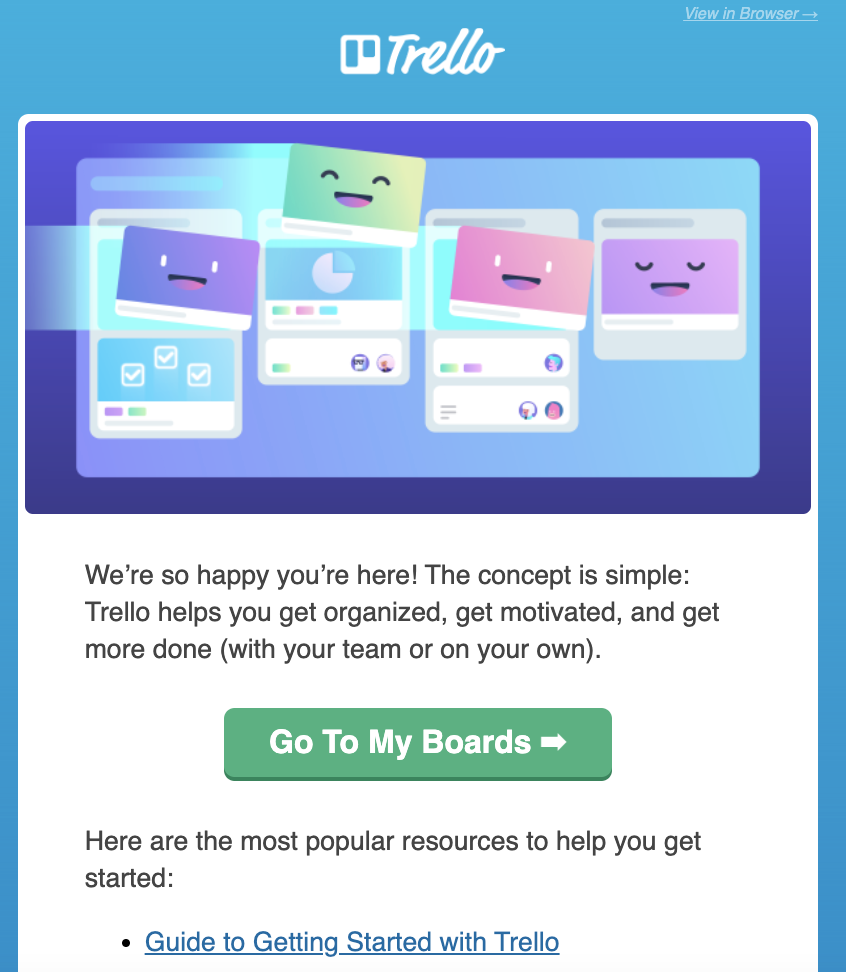Why lifecycle marketing matters for your social team

From putting an organization on the map to churning out revenue, marketing functions each play a unique role in an organization’s larger goals.
At times, it might seem that social media managers are stuck in silos, focused more on brand awareness than direct revenue impact. If you’ve ever had to explain the merit of impressions and engagement, you likely understand the frustration. But, behind the scenes, there is a lot that marketing teams can learn from their company’s social strategy and the number of eyes their external content can reach.
One great example of a function closer to the bottom of the funnel that could be a force for great collaboration with social teams? Lifecycle marketing.
What is lifecycle marketing?
While social media tends to capture new minds early in learning about a company, lifecycle marketing (also known as retention, growth or customer journey marketing) focuses more on people who are already registered for and using a product or service.
If you’ve ever signed up for something and received onboarding emails educating you on using the product, push notifications, regular drops of new resources, or a newsletter of sorts, it’s likely the lifecycle machine at work.
Even if you specialize, every marketing should have a basic understanding of:
1️⃣ Copywriting
2️⃣ Conversion Optimization
3️⃣ Lifecycle Marketing
4️⃣ StorytellingWhat would you add?
— tim peckover (@timothypeckover) April 29, 2022
Lifecycle marketing focuses on strategies to help customers find value at different touchpoints in their experience with the product. For example, someone’s needs early on in starting to use the product likely differ from seasoned super users, or even more hesitant users who may need some incentive to stick with it.

The lifecycle team looks at all these different pieces and tries to build around the right experience for other groups of user needs. At Grammarly, for example, many audiences use our product, including students, professionals, freelancers and more. Each has different goals for Grammarly as a product, which is reflected in the many ways marketing communicates to them.
Three ideas to spark cross-team collaboration
While social media teams may be more familiar with metrics like impressions and leads generated, lifecycle teams focus more on metrics like product utilization, churn and LTV (lifetime value—the monetary amount that the average customer who signs up for a plan or subscription is worth).
Both teams want the company to succeed. While it seems like two wildly different means to an end, there is value in merging the user data lifecycle teams capture with the insights and customer conversations happening on social.
If you’re a social media manager unsure of where to start, here are some quick ideas to spark unique collaboration with your lifecycle marketing colleagues:
1. Social listening
With lifecycle teams often focused on the experience for existing users, it can be hard to understand why users don’t join at all or which users are likely to quit. Luckily, a lot of this information can be found online through social listening.
Exasperated users may quickly Tweet or publicly share their misfortunes with a product. Skeptical users may Tweet about shady emails, pricing questions or security issues. All of this information that’s readily available to a social team could be extremely valuable for a lifecycle team to build for specific segments of users. For smaller teams, it can be simple to consolidate these thoughts and share them in a regular meeting. For teams at scale, Slack groups are likely easier to knowledge share regular insights and hypotheses.
2. Super user engagement
Lifecycle teams have access to a mountain of data, often noting who are some of the most active, highest engaged and regularly recurring users of a product or service. While not all super users of a product are likely to use social media, there are a lot of opportunities to drive these users to share their experiences publicly with the product. I love this simple example from NBA Top Shot, asking queue users to share their reactions on social.

Public testimonials, prompted through in-product or email channels, can be a huge boon for social teams and provide a ripple effect on brand impressions. A bonus—for customer loyalty teams with unique merchandise or referral programs, people sharing these on social media can also give your organization extra praise.
Very happy to be part of the @HubSpot community!
Thanks for the headphones! pic.twitter.com/B0vv397TY3
— Connor Skelly (@connor_skelly_) January 7, 2022
3. Repurposing content
While blog posts can often reach those who may not be current customers, a lot of this content is valuable for (and may be unseen by) your current user base. At Grammarly, our content team has a lot of data on which blog content performs well on social, drives traffic, drives sign-ups and has seasonal value. We’re always looking for opportunities on the lifecycle team to find new homes for high-performing content as an additional value-add for existing users. Even if the content isn’t specifically about the product, teaching something new or revelatory can do wonders for brand affinity and add an extra dimension of value to lifecycle communications.

This doesn’t even have to extend to blog content. Have a strong performing TikTok? Instagram Reel? Hashtag challenge? Continue to give it new life with your lifecycle teams.
Pairing social and lifecycle marketing: Take the first step
While collaborations can be challenging, there is value in keeping a close eye on what our marketing peers are doing.
For larger organizations where teams are farther apart, simple actions—like making sure teams are liking your brand’s social pages and sharing content—could help introduce a new habit of consumption for your colleagues and increase internal awareness of each other’s work. If your organization is smaller and riper for immediate collaboration, there could be value in regularly sharing your KPIs and content strategies.
If you’re unsure of your organization’s lifecycle marketing strategy, subscribe to your organization’s emails and text messages. Look at the content and imagine a world where someone was Tweeting about how wonderful (or possibly questionable) that information is.
Spending a lot of time on social channels means you’ve often recalibrated your brain to anticipate how people react. Psychologically, this can be incredibly helpful to your lifecycle counterparts.
No matter where you start, you never know which small actions can make a world of collective difference.



Share